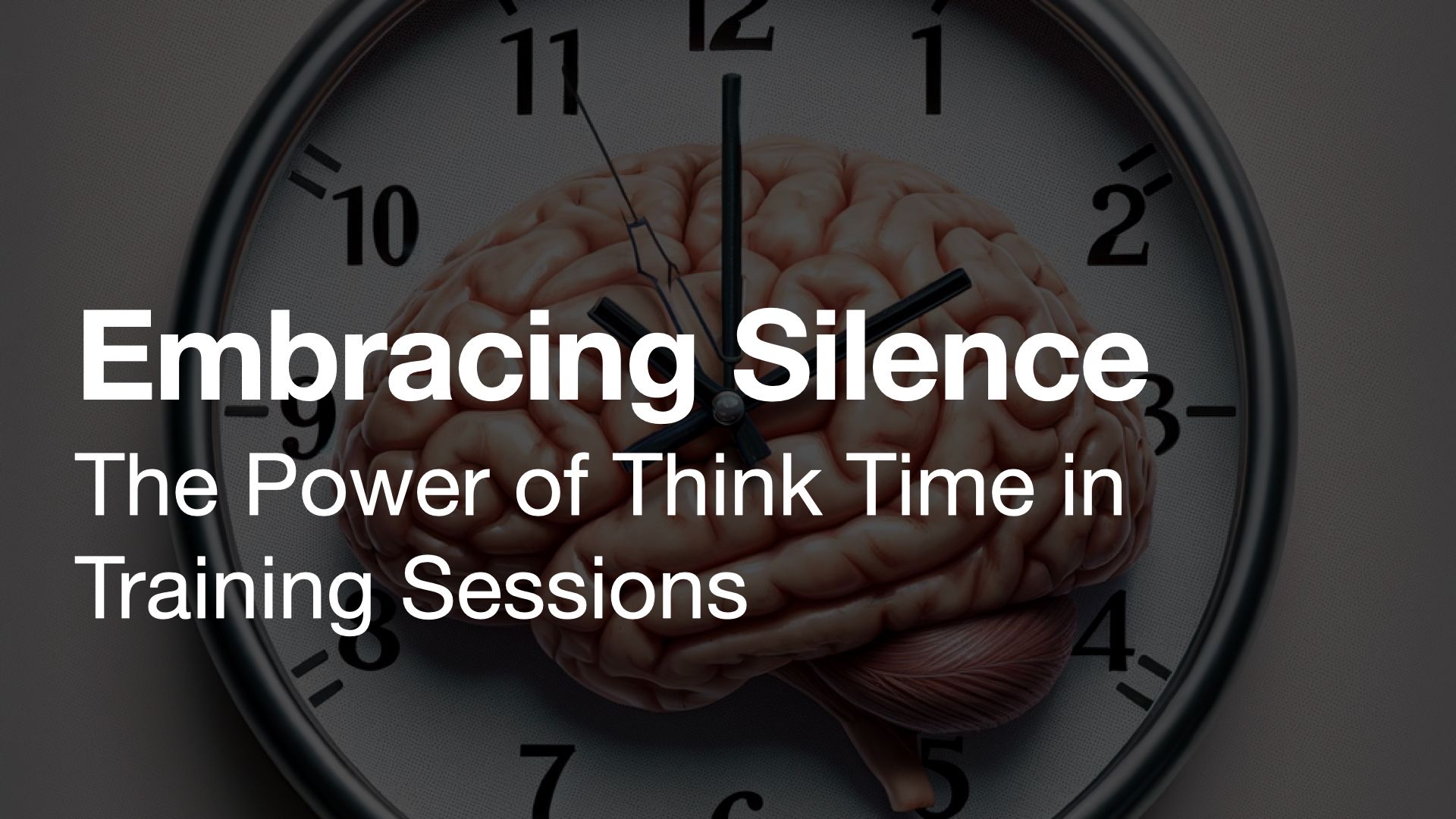Embracing Silence: The Power of Think Time in Training Sessions
Jan 04, 2024
Silence is often misinterpreted as a lack of engagement. However, embracing 'think time' is crucial for deep learning. Neuroscience supports this, revealing how our brains process and retain information more effectively with reflective pauses. Let's explore this concept through a threefold approach:
1. Decoding the Silence: The Neuroscience Perspective
Silence is a catalyst for cognitive processing. When a question is asked, the brain engages in a complex series of operations. Neuroscientific studies reveal that during these quiet moments, the prefrontal cortex, responsible for higher-order thinking, becomes active. This is where information is analyzed, connected with existing memories in the hippocampus, and synthesized into coherent thoughts. By allowing 7 to 8 seconds of think time, we give learners the opportunity to engage these critical brain regions more thoroughly.
2. Respecting Cognitive Diversity: Understanding Brain Processing Speeds
Every learner's brain is unique, not just in terms of knowledge but also in processing speed. This variation is partly due to differences in the myelination of neurons, which affects how quickly information travels through neural pathways. Fast responders may have more myelinated neural pathways in certain areas, allowing for quicker retrieval and response. By providing longer think times, we cater to learners who might need additional seconds for their neural pathways to process and formulate responses, ensuring inclusivity in learning.
3. Practical Application: Neuroscience-Informed Strategies for Think Time
To effectively implement think time in line with our neurological understanding, consider these strategies:
a. Create a Brain-Friendly Environment: Start by setting the tone that silence is a part of the learning process. This understanding reduces anxiety and creates a more conducive environment for brain activity.
b. Use Varied Neurological Stimuli: Incorporate activities that stimulate different brain areas. For instance, after a period of think time, engage learners in a brief discussion or a hands-on activity. This variation keeps different parts of the brain active and engaged.
c. Observe and Adjust: Pay attention to the learners’ responses. If a learner seems to struggle, offer scaffolding or hints to help activate relevant neural connections. This approach ensures that all learners, regardless of their neurological processing speeds, can participate meaningfully.
By understanding and respecting the neurological underpinnings of learning and cognitive diversity, trainers can foster an environment that encourages deeper understanding, critical thinking, and inclusive participation. Embracing silence, therefore, becomes a powerful tool in unlocking the full potential of each learner’s brain.
SUBSCRIBE FOR INSTRUCTIONAL COACHING INSIGHTS
Stay updated with LRNLI's latest tips and strategies.
We hate SPAM. We will never sell your information, for any reason.

